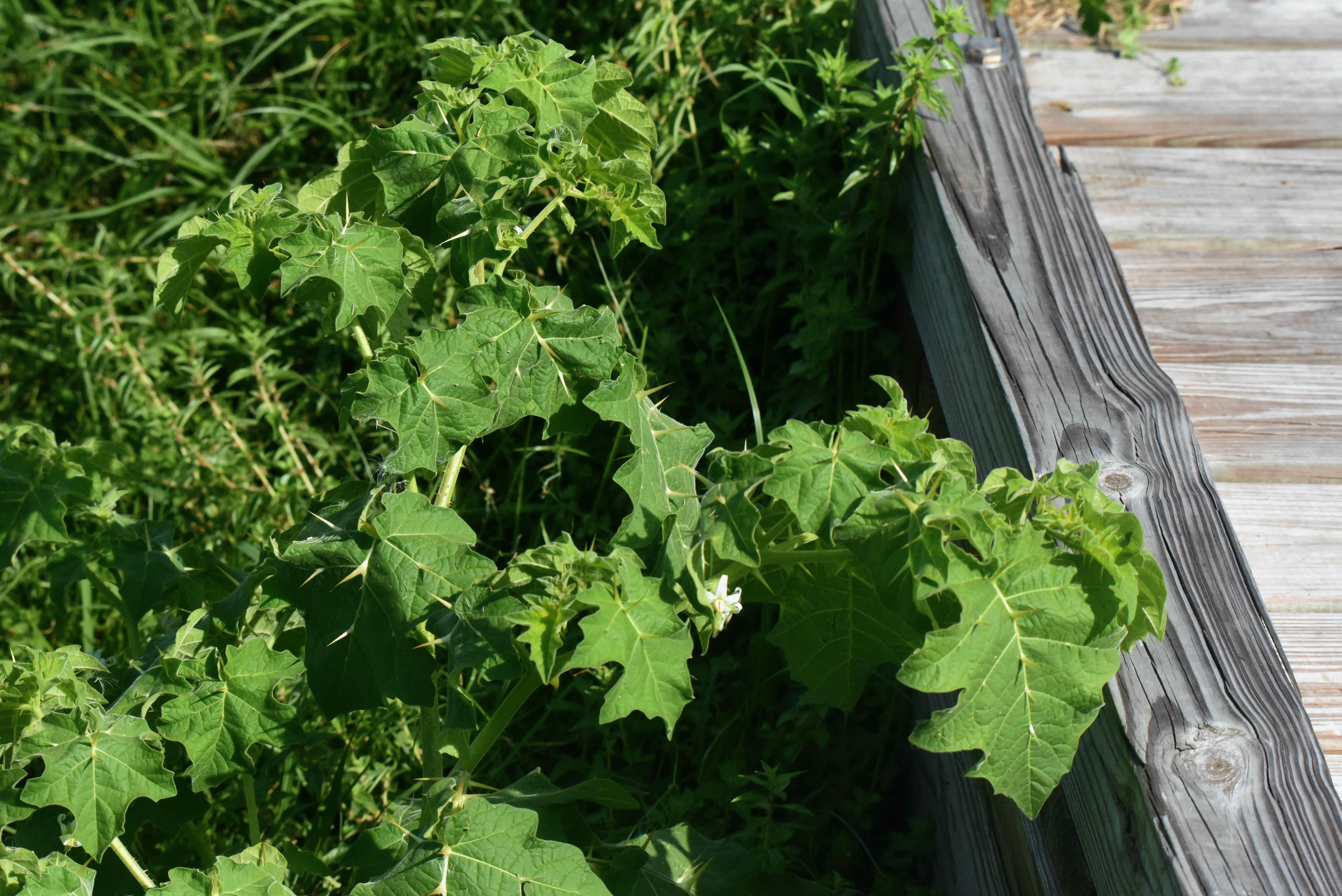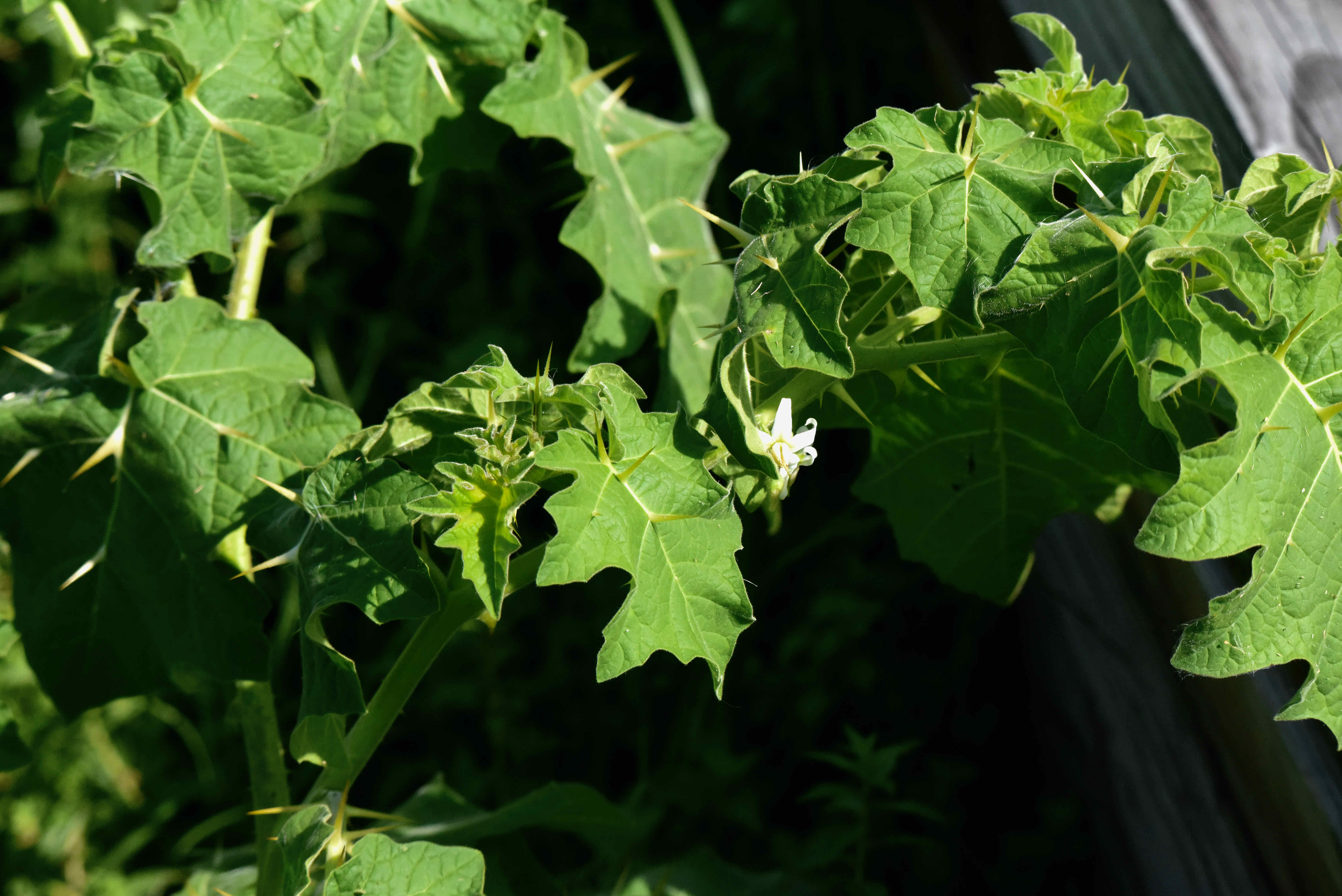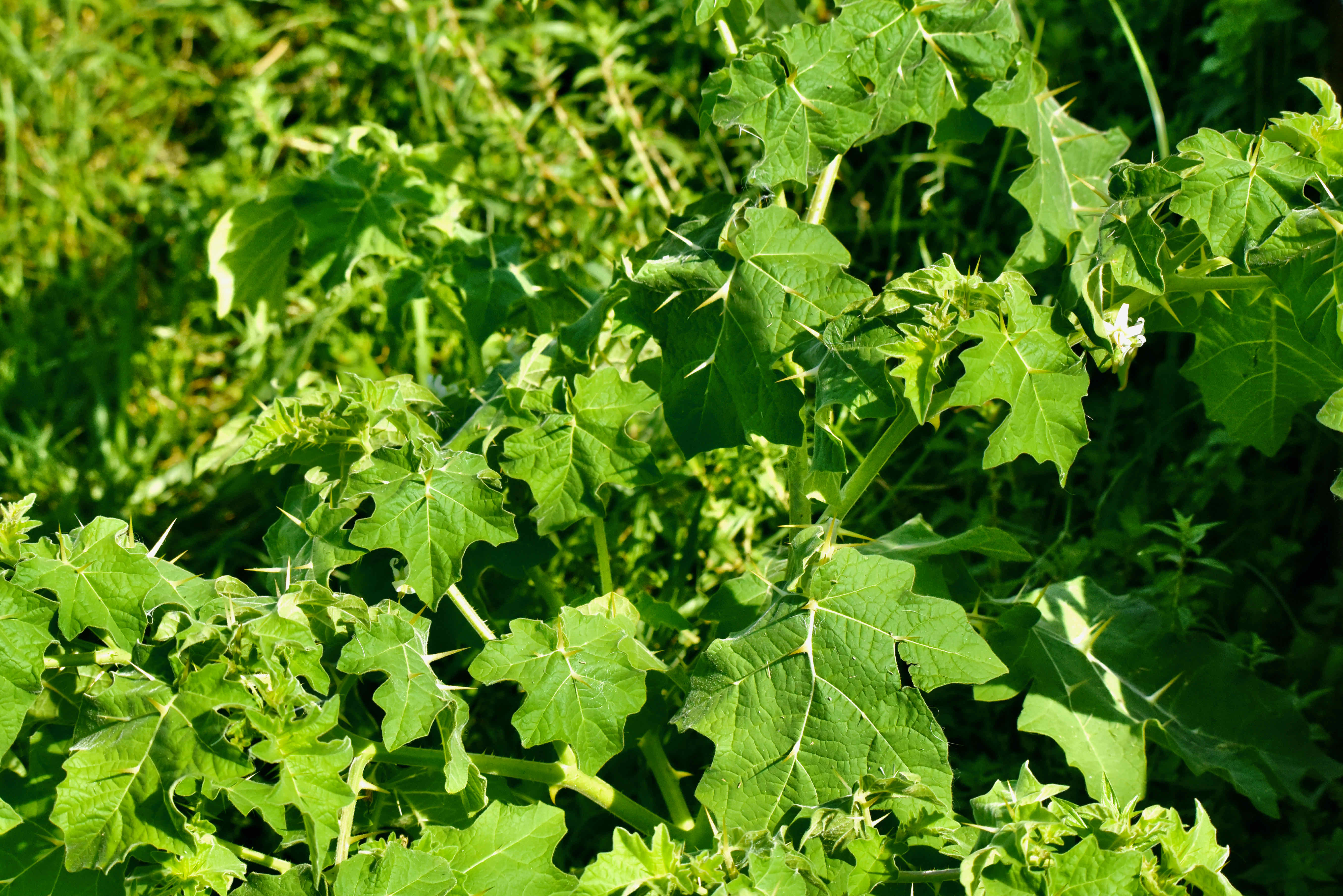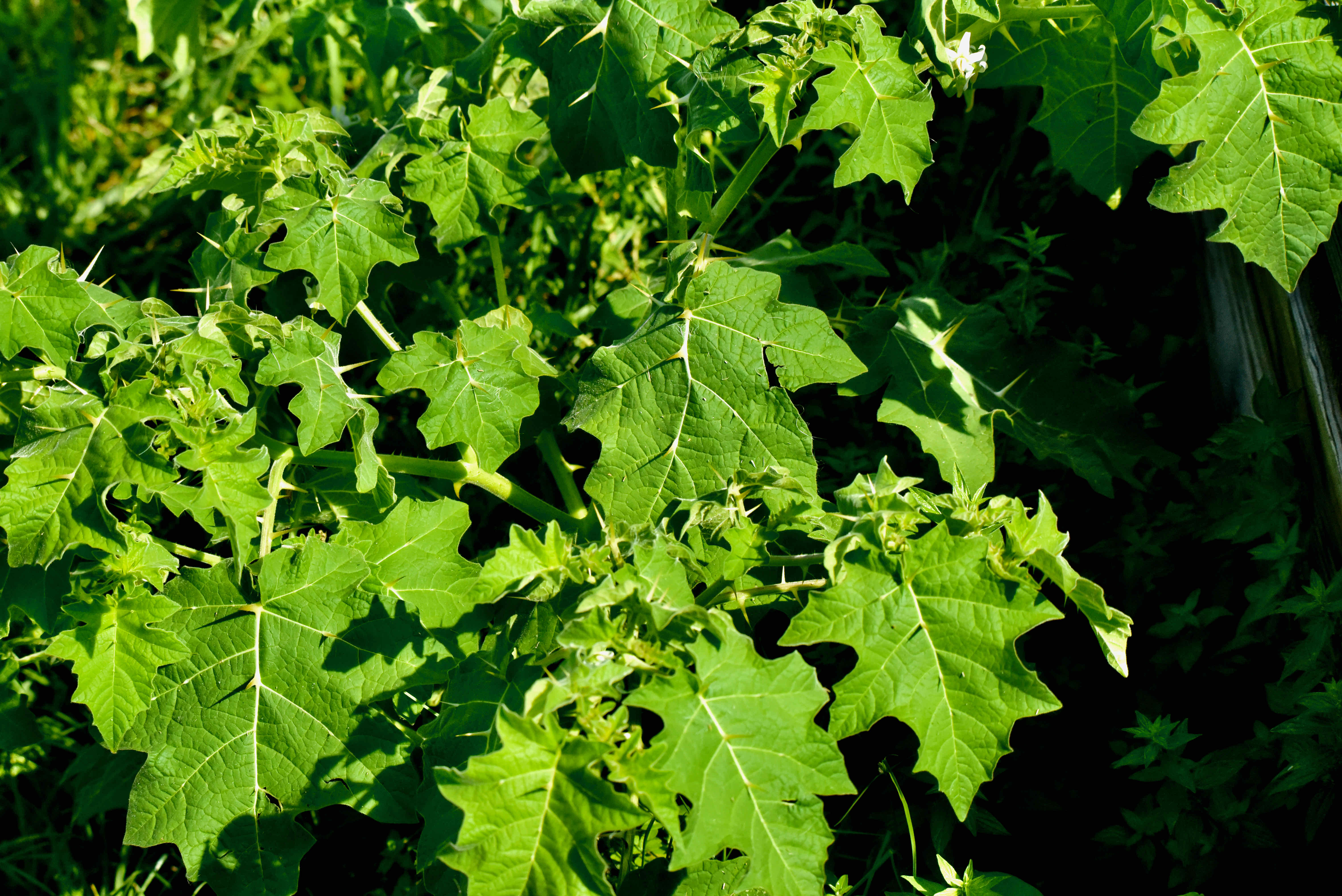
Tropical soda apple, photographed at Green Cay Nature Center, Boynton Beach, Palm Beach County, in May 2021.
One glance at tropical soda apple will tell you that this is a plant determined not to be fodder for foraging animals. Few plants are as formidably armed.
The top of leaves are covered with nasty thorns. The bottom of leaves are covered with nasty thorns. The stems are covered with even more nasty thorns. Animals won’t touch the stuff.
But the fruit is another matter altogether. Cows, deer, raccoons and wild hogs devour the stuff, and that’s a problem because the fruit contain hundreds of “hyperviable” seeds. Tropical soda apple can all but take over a field in a year or two.
Tropical soda apple, known in the scientific world as Solanum viarum, is a native of South America that has invested more than a million acres of Florida pastureland. It’s found far north as Pennsylvania, but it more common in the Southeast, particularly Florida. And within the Sunshine State, it’s the southern end of the Peninsula that’s that’s been hardest hit.
The Florida Exotic Pest Plant Council has declared it a Category I invasive, the feds have declared it to be a noxious weed.
Its native range is South America — Brazil, Paraguay, Uraguay and Argentina. The plant was unknown in Florida until the 1980s. Favorite habitats include hammocks and the edges of hammocks. Tropical soda apple seeds carried in the stomachs of cows imported into the state from Brazil are believed to be the original source of the infestation. It’s estimated that tropical soda apple has taken hold in more than one million acres of Florida pastureland. It’s also made its way to parts of the Caribbean, Africa, Asia and Australia. In India, it’s used in traditional medicine to treat a variety of conditions.
It needs to be said that tropical soda apple is generally toxic, but as the fruit ripens, it becomes palatable at least to animals. The fruit are about the size of ping pong ball, mottled green and white sort of like some watermelons. Each fruit will have between 200 and 400 seeds; one plant can develop between 40,000 and 50,000 seeds in a single season. What’s more, as much as 75 percent of those seeds will viable.
As foraging animals eat the fruit, they help scatter the seeds, with a generous amount of fertilizer to help the seedlings get off to a fast start in life. Tropical soda apple can quickly take over, pastures, citrus groves and sugar cane fields. The plant flowers and sets fruit year-round, but particularly September into May.
The plants themselves can stand three to six feet tall, with broad leaves and the tell-tale thorns. The flowers are star-shaped like other member of the nightshade family, with yellow stamen. It has a extensive root system that can spread out as much as six feet from the crown. In cold weather, tropical soda apple might be top-killed, but can resprout from its roots.
It has a cousin in Florida called red soda apple, S capsicoides, that is similar in looks but has red fruit and shiny leaves.
On top of everything else, tropical soda apple acts as a reservoir for at least six viral diseases that attacks crops, while doing minimal damage to the host.
But tropical soda apple isn’t all bad. It produces a chemical called solasodine that is used to manufacture steroids for medicinal uses, including contraceptives. In India, the fruit is used to treat colds, asthma, wounds, toothaches and more. It’s used as a contraceptive and to induce abortions.
Tropical soda apple is also known as soddom apple. It is a member of Solanaceae, the nightshade family, which includes tomatoes, peppers and eggplant among others.



